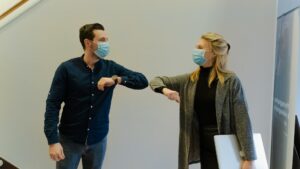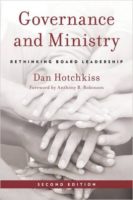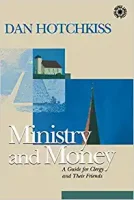For reasons too familiar to go into, leaders in the political and public health realms have become allergic to pandemic mandates. Rules became advice, advice became guidelines—leaving leaders of school districts, universities, and congregations to make decisions based on gut feelings and political alignments. Community leaders need a firmer way to ground their Covid policies in science.
One ray of hope, I think, comes with the new “Covid-19 Community Levels” framework from the Centers for Disease Control and Prevention. Using a quick, straightforward website, anyone can get the Community Level for each county in the country. Unlike some early efforts to quantify the Covid threat based on one or two statistics, the Community Levels combine hospitalization rates, hospital burden, and case rates.
Green, Yellow, Orange
The result is a single risk level, updated every Thursday evening that rates each county by risk level: Green (low), Yellow (medium), or Orange (high). Sadly, the CDC offers no Soothing Lavender (it’s over!) and no Bleeding Red (panic!)—but on second thought, they probably were wise to leave those out.
The purpose of the Levels, says the CDC, is to “help individuals and communities decide which prevention actions to take based on the latest information.” In fact, the CDC’s advice is aimed almost entirely at individuals and not communities. If it’s your job to decide whether a school or church or synagogue should open, or whether to require vaccination or masks, or how to address the special needs of choirs or children’s ministries, CDC guidance leaves you pretty much on your own.
The new Community Levels suggest a way for congregations and other organizations can make policies not only for the current epidemic but for future ones as well.
Closing the Gap
In the last few months, I’ve been working with some congregations that would like to close the gap. They want to base their policies on science, but they are tired of waiting for the CDC to give advice directed to decision makers in the social-sector groups. Congregations can and will choose their own level of strictness about Covid. But the Community Levels make it possible to key those choices to scientific estimates of risk, in this epidemic and future ones as well.
Below is how one church chose to lay out its policies based on suggestions from me. Recognizing that singing is an especially risky activity with airborne viruses, they added a column with special rules for choirs. Another congregation added one for children’s ministries, and yet another for its elder programs. I am not expressing an opinion about the specific level of strictness this congregation chose. But I think the framework could be useful to any congregation that wishes to protect people’s health while holding out a vision of hope:
Covid Safety Policy
We seek to be a community that is inclusive, hospitable, and safe for all people. To this end, our Board has adopted the following COVID safety protocols.
The Center for Disease Control and Prevention has developed a system of Green, Yellow, and Orange Community Levels based on hospitalization rates, hospital burden, and case rates. We will rely on the CDC’s Level for our county in adjusting our COVID safety protocols. Leaders of programs that pose special risks because of the vulnerability of participants may adopt stricter rules than those listed below. The Minister and Board Chair, acting together, may impose stricter protocols for the whole church until the Board can meet to revise these policies.
Regardless of the Community Level, anyone experiencing virus symptoms or with known exposure is asked to worship with us online and refrain from other building use.
| CDC Community Level | General policies | Choir policies |
|---|---|---|
| Green (Low) | Masks are optional, but always acceptable and welcome. Church activities and building use may proceed with reasonable precautions for public health. | Masks are optional. |
| Yellow (Medium) | Masks are required at worship services. Masks are required for other indoor group events when social distancing of three feet or more is not possible (generally more than 40 people in the Sanctuary or more than 25 people in the Parish Hall). Worship or program leaders may unmask when speaking or singing. | Masks are required for rehearsals. Masks are optional when performing. |
| Orange (High) | Masks are required for all building use. | Masks are always required. |
Each Thursday evening, after the CDC updates the Level for the congregation’s county, the church updates its website to show the current level and the rules that will apply that weekend.
One question leaders will certainly be asked is why the rules should change for seemingly minor reasons: county has had only a couple of infections more or less, or because it happens to fall on one side of a county border rather than the other. That concern is understandable, but of course it applies to any rule-based boundary from speed limits to the drinking age. To protect the public, boundaries must be drawn, and sometimes rules will change based on small differences.
We all hope the Covid epidemic is approaching its end, but of course we don’t know—I feel optimistic, but I felt optimistic last year at this time too. Even if Covid does lose steam, another public health threat could arise at any time. When that happens, we’ll be stronger if we have a useful structure for connecting congregations’ policies with whatever guidance our political and scientific leaders find the courage to provide.
Dan Hotchkiss has consulted with a wide spectrum of churches, synagogues, and other organizations spanning 33 denominational families. Through his coaching, teaching, and writing, Dan has touched the lives of an even wider range of leaders. His focus is to help organizations engage their constituents in discerning what their mission calls for at a given time, and to empower leaders to act boldly and creatively.
Dan coaches leaders and consults selectively with congregations and other mission-driven groups, mostly by phone and videoconference, from his home near Boston. Prior to consulting independently, Dan served as a Unitarian Universalist parish minister, denominational executive, and senior consultant for the Alban Institute.



